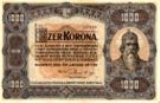
Ferenc Helbing
Encyclopedia

Hungary
Hungary , officially the Republic of Hungary , is a landlocked country in Central Europe. It is situated in the Carpathian Basin and is bordered by Slovakia to the north, Ukraine and Romania to the east, Serbia and Croatia to the south, Slovenia to the southwest and Austria to the west. The...
graphic artist and painter.
Helbing was born in Érsekújvár
Nové Zámky
Nové Zámky is a town in southwestern Slovakia.-Geography:The town is located on the Danubian Lowland, on the Nitra River, at an altitude of 119 metres. It is located around 100 km from Bratislava and around 25 km from the Hungarian border. It is a road and railway hub of southern...
, then in Hungary, today in Slovakia
Slovakia
The Slovak Republic is a landlocked state in Central Europe. It has a population of over five million and an area of about . Slovakia is bordered by the Czech Republic and Austria to the west, Poland to the north, Ukraine to the east and Hungary to the south...
. He started his career as a lithographer
Lithography
Lithography is a method for printing using a stone or a metal plate with a completely smooth surface...
. After studying applied graphics and applied art
Applied art
Applied art is the application of design and aesthetics to objects of function and everyday use. Whereas fine arts serve as intellectual stimulation to the viewer or academic sensibilities, the applied arts incorporate design and creative ideals to objects of utility, such as a cup, magazine or...
s, he became a printing manager. He taught at the College of Applied Graphics (from 1906) then at the College of Applied Arts (from 1910); he managed the latter until 1936. He made a pioneer work in the field of the Hungarian commercial graphics
Commercial art
Commercial art is historically a subsector of creative services, referring to art created for commercial purposes, primarily advertising. The term has become increasingly anachronistic in favor of more contemporary terms such as graphic design and advertising art.Commercial art traditionally...
. He was the designer of many Hungarian banknotes. He also created posters, stamps, illustrations for books, glass paintings and murals (e.g. at the Palace Hotel (Palotaszálló) in Lillafüred) and won a number of prizes on applied arts and graphics competitions. Some of his works can be seen in the Hungarian National Gallery
Hungarian National Gallery
The Hungarian National Gallery , was established in 1957 as the national art museum. It is located in Buda Castle in Budapest, Hungary. Its collections cover Hungarian art in all genres, including the many twentieth-century Hungarian artists who worked in Paris and other locations in the West...
.
He died in Budapest
Budapest
Budapest is the capital of Hungary. As the largest city of Hungary, it is the country's principal political, cultural, commercial, industrial, and transportation centre. In 2011, Budapest had 1,733,685 inhabitants, down from its 1989 peak of 2,113,645 due to suburbanization. The Budapest Commuter...
.
See also
- Hungarian korona banknotes designed by Ferenc Helbing
- Hungarian pengő banknotes designed by Ferenc Helbing
External links
- Magyar Nemzeti Galéria (Hungarian National Gallery, homepage in English)

